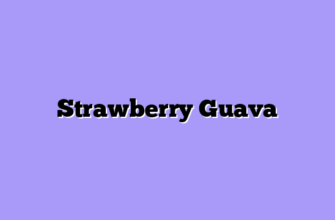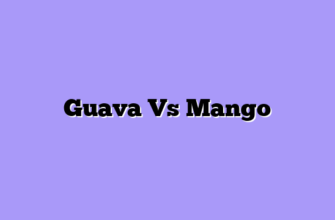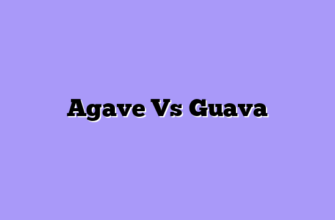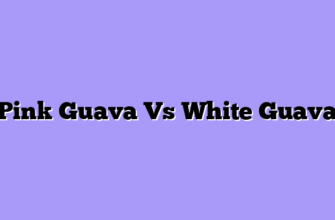Guava and banana are both popular tropical fruits with distinct flavors, textures, and nutritional profiles. Guava, with its tart and slightly sweet flavor, is known for its high vitamin C content. Banana, on the other hand, offers a creamy texture and a sweet taste, being rich in potassium.
Nutritional Comparison
Guava, a fruit native to Mexico and Central America, is known for its high vitamin C content. In fact, a single guava provides more than twice the daily recommended intake of vitamin C, a powerful antioxidant that supports immune function and collagen production. Additionally, guava is a good source of dietary fiber, which aids digestion and promotes satiety. It also contains potassium, a mineral essential for maintaining blood pressure and muscle function.

When comparing their nutritional profiles, guava emerges as a clear winner in terms of vitamin C content. However, bananas excel in potassium levels, making them a valuable choice for maintaining electrolyte balance. Both fruits are excellent sources of dietary fiber, contributing to digestive health.
Beyond their individual nutrient profiles, guava and banana offer distinct health benefits. Guava, with its high vitamin C content, is known to boost the immune system and protect against oxidative stress. It also possesses anti-inflammatory properties, which may help reduce the risk of chronic diseases. Bananas, with their high potassium content, are beneficial for regulating blood pressure and preventing muscle cramps. They are also a good source of carbohydrates, providing a quick and sustained energy boost.
Taste and Texture: Exploring the Differences
The guava, with its firm, slightly grainy flesh, presents a unique taste that is both sweet and tangy. The sweetness is often described as a delicate balance of honey and citrus, while the tanginess adds a refreshing complexity. This combination is further enhanced by a subtle floral aroma that lingers on the palate. The texture of the guava, though firm, is not overly dense, allowing for a pleasant chewiness that complements the flavor.
In contrast, the banana, with its soft, creamy texture, offers a more straightforward sweetness. The flavor is typically described as mellow and slightly buttery, with a hint of vanilla. The banana’s texture, ranging from firm to mushy depending on ripeness, provides a smooth and satisfying mouthfeel.
The differences in taste and texture stem from the distinct chemical compositions of these fruits. Guavas are rich in vitamin C, potassium, and fiber, contributing to their tangy flavor and firm texture. Bananas, on the other hand, are high in carbohydrates, potassium, and vitamin B6, resulting in their sweet taste and soft texture.
Beyond their individual characteristics, the taste and texture of guava and banana also influence their culinary applications. Guavas, with their tangy sweetness and firm texture, are often used in jams, jellies, and chutneys. They can also be enjoyed fresh, adding a burst of flavor to salads and smoothies. Bananas, with their mellow sweetness and soft texture, are a versatile ingredient in baked goods, smoothies, and desserts. They can also be enjoyed fresh, providing a convenient and nutritious snack.
Culinary Uses
Guava, with its tart and slightly tangy flavor, is often used in jams, jellies, and chutneys. Its firm texture allows it to hold its shape during cooking, making it ideal for pies, tarts, and crumbles. Guava’s vibrant color also adds a visual appeal to desserts. In savory applications, guava can be incorporated into salsas, chutneys, and marinades, adding a touch of sweetness and acidity to grilled meats and fish.
Bananas, on the other hand, are known for their sweet and creamy flavor. Their soft texture makes them perfect for smoothies, milkshakes, and baked goods. Bananas can be mashed and added to cakes, muffins, and breads, providing moisture and sweetness. Their versatility extends to savory dishes as well. Green bananas, for instance, are a staple ingredient in many Caribbean and African cuisines, where they are used in stews, soups, and fritters.
The combination of guava and banana creates a harmonious blend of flavors and textures. In desserts, the tartness of guava complements the sweetness of banana, resulting in a balanced and refreshing taste. For example, a guava and banana crumble, with its crispy topping and juicy filling, is a delightful treat. In savory dishes, the combination can add a unique twist. A guava and banana salsa, with its sweet and tangy notes, can be served with grilled chicken or fish, adding a tropical flair to the meal.
Beyond their individual uses, guava and banana can be incorporated into a variety of culinary traditions. In Latin America, guava paste is a popular ingredient in desserts and pastries, while banana chips are a common snack. In Southeast Asia, guava and banana are often used in curries and stir-fries, adding a touch of sweetness and acidity.
Health Benefits
Guava, known for its sweet and slightly tart flavor, is a powerhouse of antioxidants. It is particularly rich in vitamin C, which is essential for boosting the immune system, promoting collagen production, and protecting against cell damage. Additionally, guava is a good source of dietary fiber, which aids digestion and helps regulate blood sugar levels. Its high potassium content contributes to maintaining healthy blood pressure and muscle function.
Bananas, on the other hand, are renowned for their high potassium content, which is crucial for regulating fluid balance, nerve function, and muscle contractions. They are also a good source of vitamin B6, which plays a vital role in brain function, energy metabolism, and the production of red blood cells. Bananas are a good source of fiber, although not as high as guava. They also contain resistant starch, a type of fiber that can promote gut health and improve insulin sensitivity.

When it comes to weight management, both guava and banana can be beneficial. Guava’s high fiber content promotes satiety, helping you feel fuller for longer and reducing overall calorie intake. Bananas, while containing natural sugars, are also rich in potassium, which can help regulate fluid balance and reduce bloating.
Ultimately, the best choice between guava and banana depends on your individual health goals and preferences. If you are looking to boost your immune system and improve digestion, guava is an excellent option. If you need a quick energy boost or are looking to increase your potassium intake, banana is a good choice. Both fruits offer a range of health benefits and can be incorporated into a balanced diet.
A Guide to Home Cultivation
Guava, a fruit native to Central America, thrives in warm, humid climates with ample sunlight. Its trees, typically reaching heights of 15-30 feet, prefer well-drained soil rich in organic matter. Propagation is achieved through seeds or cuttings, with the latter method offering faster growth and fruit production. Guava trees are relatively low-maintenance, requiring regular watering, fertilization, and pruning to maintain their shape and encourage fruit production.
Bananas, on the other hand, are herbaceous plants, not trees, originating from Southeast Asia. They require a tropical climate with high humidity and consistent rainfall. Banana plants prefer fertile, well-drained soil with a pH range of 5.5 to 6.5. Propagation is primarily through suckers, which are offshoots from the main plant. Banana plants are more demanding in terms of care, requiring frequent watering, fertilization, and pest control.
The differences in cultivation extend to the harvesting process. Guava fruits ripen on the tree and are typically harvested when they turn a deep yellow or red color. They can be stored at room temperature for several days or refrigerated for longer preservation. Bananas, however, are harvested green and ripen off the plant. They are typically stored at room temperature until they reach their desired ripeness.
Beyond their cultivation methods, guava and banana offer distinct nutritional profiles. Guava is rich in vitamin C, potassium, and fiber, making it a valuable source of antioxidants. Bananas, on the other hand, are known for their high potassium content, which is beneficial for blood pressure regulation. They also provide a good source of vitamin B6 and fiber.
In conclusion, while both guava and banana are tropical fruits with similar climate preferences, their cultivation methods and nutritional profiles differ significantly. Guava trees are relatively low-maintenance, while banana plants require more attention. Guava fruits ripen on the tree, while bananas ripen off the plant. Both fruits offer valuable nutritional benefits, with guava being a rich source of vitamin C and potassium, and bananas providing high potassium content and vitamin B6. By understanding these differences, home gardeners can cultivate these delicious fruits successfully and enjoy their unique flavors and nutritional value.
Q&A
**1. Which fruit has more Vitamin C?**
* **Answer:** Guava
**2. Which fruit is a better source of potassium?**
* **Answer:** Banana
**3. Which fruit is generally sweeter?**
* **Answer:** Banana
**4. Which fruit has a higher fiber content?**
* **Answer:** Guava
**5. Which fruit is typically more expensive?**
* **Answer:** Guava and banana are both nutritious fruits with distinct flavors and nutritional profiles. Guava is higher in vitamin C and fiber, while banana is a good source of potassium and vitamin B6. Ultimately, the best choice depends on individual preferences and dietary needs.








